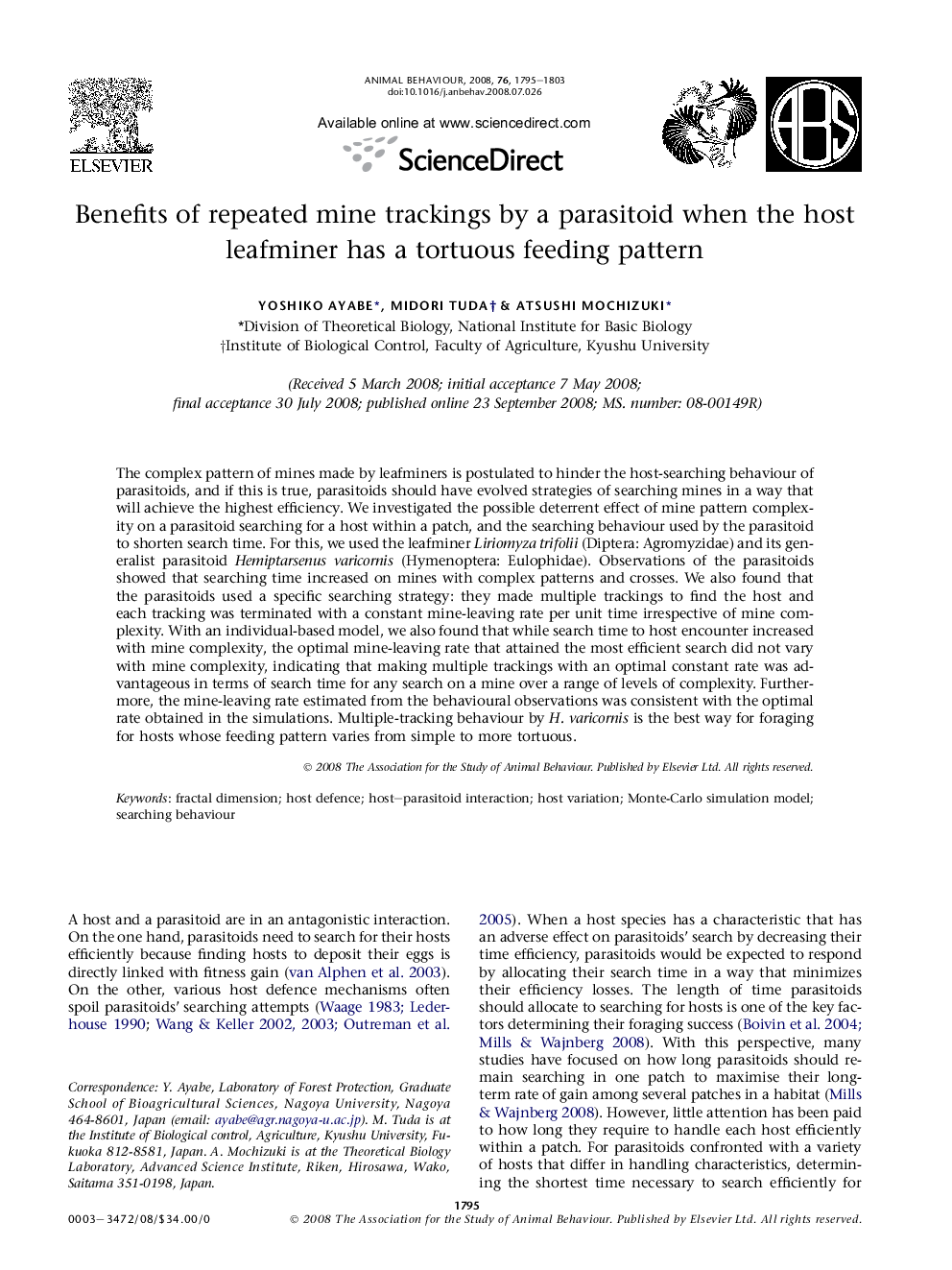| Article ID | Journal | Published Year | Pages | File Type |
|---|---|---|---|---|
| 2418484 | Animal Behaviour | 2008 | 9 Pages |
The complex pattern of mines made by leafminers is postulated to hinder the host-searching behaviour of parasitoids, and if this is true, parasitoids should have evolved strategies of searching mines in a way that will achieve the highest efficiency. We investigated the possible deterrent effect of mine pattern complexity on a parasitoid searching for a host within a patch, and the searching behaviour used by the parasitoid to shorten search time. For this, we used the leafminer Liriomyza trifolii (Diptera: Agromyzidae) and its generalist parasitoid Hemiptarsenus varicornis (Hymenoptera: Eulophidae). Observations of the parasitoids showed that searching time increased on mines with complex patterns and crosses. We also found that the parasitoids used a specific searching strategy: they made multiple trackings to find the host and each tracking was terminated with a constant mine-leaving rate per unit time irrespective of mine complexity. With an individual-based model, we also found that while search time to host encounter increased with mine complexity, the optimal mine-leaving rate that attained the most efficient search did not vary with mine complexity, indicating that making multiple trackings with an optimal constant rate was advantageous in terms of search time for any search on a mine over a range of levels of complexity. Furthermore, the mine-leaving rate estimated from the behavioural observations was consistent with the optimal rate obtained in the simulations. Multiple-tracking behaviour by H. varicornis is the best way for foraging for hosts whose feeding pattern varies from simple to more tortuous.
